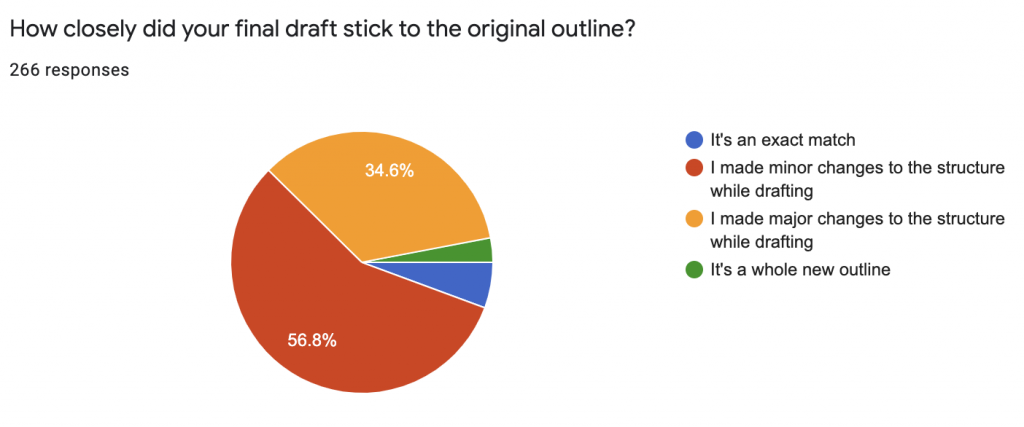
It’s been drummed into your head since grade school: outline before you write. This is excellent advice. Outlines make you think clearly before you write, and keep you on track for longer projects.
If you pitch a nonfiction book to an editor, your proposal includes a detailed outline. The editor decides to buy the book or not on the basis of that proposal. So, you might think that the outline is set at this point.
Here’s the secret: Most published nonfiction books don’t match the outlines that the authors proposed.
Books tend to outgrow their outlines as we write.
Are You Part of the 6 Percent?
I recently conducted a survey of over 400 nonfiction authors, both published and not-yet published. Of those with published books, about half had worked with traditional publishers, which meant they had submitted a book proposal with an outline.
Do you know how many authors ended up with a book that matched their outline? Less than six percent!
The rest of us make adjustments. As we write, better approaches reveal themselves. In the survey:
- More than half (56%) made minor changes
- More than a third (34 percent) had major deviations
- Three percent ditched the original outline completely

Outline, Then Grow
Outlines serve many purposes: they keep us on task, help us scope the work, and make us think critically about the thing we’re writing.
But often the thing we write outgrows the outline. You realize partway through this part would be better over there, or maybe the reader would rather encounter this bit first. (See my post on Outgrowing Your Outline.)
Maybe you’re one of the six percent who gets it exactly right when you outline. But don’t count on it. Don’t be afraid to adjust the outline to make the final work better.